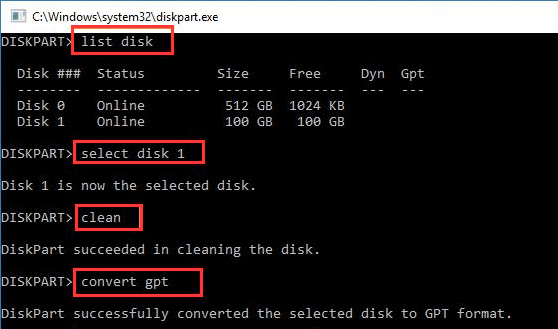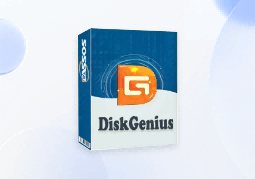Position: Resource - Partition Management - How To Convert MBR to GPT Without Losing Data ?
Table of contents:
In the ever-evolving world of computing, storage systems have undergone significant advancements to keep pace with the increasing demands of modern applications and operating systems. One such advancement concerns disk partitioning schemes, with Master Boot Record (MBR) and GUID Partition Table (GPT) being two of the most prevalent formats. While MBR has been a staple for decades, GPT offers several advantages that make it the preferred choice for modern systems. MBR VS. GPT, what's the difference and which is better? Here is a quick summary:
MBR (Master Boot Record): Introduced in 1983, MBR is an older partitioning scheme used in many legacy systems; MBR supports a maximum disk size of 2TB and can only have up to four primary partitions; It stores boot data in the first sector of the disk, which can be prone to corruption.
GPT (GUID Partition Table): GPT is part of the UEFI (Unified Extensible Firmware Interface) standard and offers a more modern approach to disk partitioning; GPT supports disks larger than 2TB and allows for an almost unlimited number of partitions; It stores multiple copies of the partitioning and boot data across the disk, improving redundancy and data integrity.
|
|
MBR (Master Boot Record) |
GPT (GUID Partition Table) |
|
Partition Limit |
Up to 4 primary partitions |
Unlimited (practically 128 partitions in Windows) |
|
Partition Size |
Maximum of 2 TB | Supports up to 9.4 ZB |
|
Compatibility |
Older systems and BIOS | Newer systems with UEFI |
|
Data Redundancy |
No built-in redundancy |
Multiple copies of partition and boot data |
|
Error Checking |
Minimal |
CRC32 checksums for better error checking |
|
Boot Method |
BIOS | UEFI |
Transitioning from MBR to GPT partition style provides benefits that are particularly advantageous for modern computing environments. Here are some reasons why you might consider making the switch:
- Support for larger drives: MBR has a maximum partition size of 2TB, which limits its usefulness for modern large-capacity drives. GPT, in contrast, supports much larger partitions, making it ideal for today's storage needs.
- More partitions: MBR allows only up to four primary partitions, which can be restrictive. GPT allows for an almost unlimited number of partitions, providing greater flexibility in managing data.
- Enhanced reliability: GPT includes multiple copies of boot data across the disk, reducing the risk of data corruption. This redundancy ensures higher reliability and data integrity.
- Better error correction and security: GPT offers improved error correction and security features, such as cyclic redundancy check (CRC) for error detection. These enhancements make GPT the preferred choice for modern operating systems like Windows 10 and 11, macOS, and many Linux distributions.
Before converting your disk from MBR to GPT, ensure the following:
1. Some methods provided in this article can result in data loss. Thus, it's a good idea to back up files, and make sure backups are secure and accessible in case of any issues during the conversion.
2. Check the compatibility of your computer hardware and software. Make sure your system's firmware supports UEFI. Most modern UEFI systems do, but if you are working with an older BIOS system, you may need to update its firmware to UEFI or consider whether GPT is compatible.
This is the recommended method to do the MBR to GPT conversion, for it does not delete any partition or file, and the tool used in this method is free of charge.
The partition manager software – DiskGenius Free Edition offers various features regarding format conversion, for example:
You can follow steps below to easily do the MBR to GPT conversion without data loss in Windows 11/10/8/7.
Step 1. Download and launch DiskGenius Free edition on our computer.
Step 2. Locate the MBR disk you want to convert on the left pane, right-click on it and choose "Convert To GUID Partition Table".

Step 3. Click "Save All" to apply the changes.

About converting a boot drive to GPT:
Although the conversion from MBR to GPT made by DiskGenius does not delete any data, there still might be risks if you are going to converting a boot device to GPT while preserving Windows. The potential consequences of converting a system disk from MBR to GPT are booting issues: After converting the disk, the BCD (boot configuration data) might need to be updated to reflect the changes. If this cannot be handled properly, it can result in booting failure. In addition to that, if your system firmware does not support UEFI, the operating system will not boot from the GPT disk.
How to Convert GPT to MBR without Data Loss:
Step 1. Select and right-click on the GPT disk you want to convert and choose "Convert To MBR Partition Table" from the context menu.
Step 2. Click "Save All" to apply the changes.
Windows Disk Management can also change the disk format from MBR to GPT, and yet some risks are involved, for example, the conversion process requires you delete all existing partitions on the disk in advance. So, this means all data on the disk will be erased. Be sure to back up all important data before attempting this method.
Here are steps to convert MBR to GPT using Disk Management:
Step 1. Press Win + X to open the start menu and then click Disk Management. This will open the Disk Management.
Step 2. Locate the disk you want to convert to GPT. Then delete all partitions on the disk.
Right-click one partition on the disk and select "Delete Volume".
Click "Yes" to confirm the deletion.
Repeat these steps to delete the rest partitions. Then there will be only unallocated space on the disk.
Step 3. Right-click the MBR disk and choose "Convert to GPT Disk".

Step 4. Right-click on unallocated space and choose "New Simple Volume". Then follow the onscreen wizard to create new partitions as needed.
Diskpart is a command-line disk partitioning utility included with Windows operating systems. It allows users to manage disk partitions, including creating, deleting, resizing, and converting partitions.
Using Diskpart to convert an MBR disk to GPT can be effective, but it comes with significant risks, especially if the disk contains important data or is the system disk. All data on the disk will be lost because Diskpart requires you to delete all existing partitions before converting the disk.
Using Diskpart to convert an MBR disk to GPT involves the following steps:
Step 1. Open Command Prompt with administrative privileges. Type cmd in the search box and then click "Run as administrator" in the searching result.
Step 2. In Command Prompt, type diskpart and press Enter.
Step 3. Type list disk and press Enter to list all available disks on your computer.
Step 4. Select the disk you want to convert. Type select disk X (replace X with number of your target disk) and press Enter.
Step 5. Delete all partitions on the selected disk. Type clean and press Enter.
Step 6. Type convert gpt and press Enter.

MBR2GPT.exe is a command-line tool provided by Microsoft, available in Windows 10 Creators Update and later versions. It allows you to convert a disk from MBR to GPT without modifying or deleting the data on the disk.
Step 1. Open Command Prompt as Administrator.
Step 2. Type the following command and press Enter.
mbr2gpt /allowfullos /convert

Using MBR2GPT.exe is a powerful and efficient method for converting a disk from MBR to GPT without data loss, but it has some limitations:
The post-conversion steps can vary depending on the conversion method you used. Different methods might have different impacts on data, partitions, and system configurations. Here are the typical steps for various methods:
1. Using Disk Management or Diskpart (Data Loss)
If you used Disk Management or Diskpart commands to do the MBR to GPT conversion, all partitions are deleted during the conversion process, resulting in data loss. So, you need to consider followings:
Recreate partitions: your disk becomes empty (unallocated space) after the conversion, you need to create new partitions on the disk.
Restore data: restore all important data from backups. If there are not backups available, you can perform partition recovery using DiskGenius.
2. Using MBR2GPT.exe (No Data Loss)
MBR2GPT.exe is designed to convert system disks without data loss, but it requires specific steps to ensure the system boots properly.
Verify Conversion: Open Disk Management to confirm the disk is now GPT.
Set Firmware to UEFI Mode: Change the BIOS settings to UEFI mode if converting a system disk.
Repair Boot Configuration Data (BCD): If the system fails to boot, use Windows installation media to repair the BCD with commands like bootrec /fixboot and bootrec /rebuildbcd.
1. Should I initialize disk MBR or GPT?
When deciding whether to initialize a disk as MBR (Master Boot Record) or GPT (GUID Partition Table), you should consider several factors related to your specific needs and the limitations of each partitioning scheme. GPT is the preferred choice due to its support for larger disks, more partitions, and enhanced reliability features. However, if you are working with older systems or smaller disks, MBR might still be suitable.
2. What happens if my system does not support UEFI after converting to GPT?
If your system does not support UEFI, it will not be able to boot from a GPT disk. Before converting a system disk, ensure your motherboard supports UEFI and that you have enabled UEFI boot mode in the BIOS settings.
3. Will converting to GPT improve my disk performance?
Converting to GPT does not improve disk performance. However, it allows for larger disk sizes and more partitions, which can enhance system organization and management.
4. Can I revert back from GPT to MBR?
Yes, you can easily revert back from GPT to MBR, for example, DiskGenius Free Edition can do the conversion without deleting any partition. First, right-click the GPT disk you want to convert and choose "Convert To MBR Partition Table"; Then click "Save All" to make the change take effect.
Converting your disk from MBR to GPT can provide numerous benefits, including support for larger drives and more partitions. Whether you choose to use built-in Windows tools or third-party software, following the steps outlined in this guide will help you make the transition smoothly. Always remember to back up your data before making any significant changes to your disk structure.

DiskGenius is a one-stop solution to recover lost data, manage partitions, and back up data in Windows.
Download